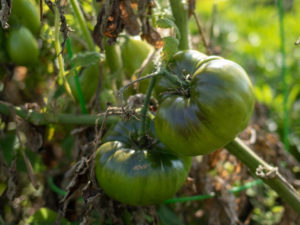Estimate the CO2 of Your Food
Food’s carbon footprint, or foodprint, is the greenhouse gas emissions produced by growing, rearing, farming, processing, transporting, storing, cooking, and disposing of the food you eat. It takes into account the whole life cycle of the food, from the equipment and nutrients needed to grow or raise it, to the transport that gets the food to our tables, and even how much of that food is typically wasted.
The amounts of greenhouse gases emissions emitted vary from food to food, with animal products like beef at the higher end of the scale, and plants like lentils at the lower end. But it’s a complicated picture, and the carbon footprint of one type of food can be different depending on how and where it’s produced. Foodprint calculators can help you estimate the CO2 of your food and help you understand how much your food choices impact the planet.
Switching to more plant-based foods, or even just reducing the amount of meat and dairy you consume, can bring your carbon footprint down by a long way. Here are four things to consider when grocery shopping:
- Beef and lamb are the most carbon-intensive foods: You (probably) guessed it: meat is the most carbon-intensive food, with beef and lamb topping the list.
- Cheese also scores high in carbon emissions: Cheese comes in at around 10-14kg of emissions per kg of food, which is unsurprising when you consider it’s usually made from milk produced by cows—and, as we know, cattle are among the most carbon-intensive animals to rear.
- Fruit and vegetables have lower carbon footprints: Because fruits and vegatables have a lower carbon footprint in total than foods like beef and other meat products, transport plays a bigger role in the overall carbon footprint of plant-based foods—so in general, looking for locally sourced vegetables will mean lower emissions.
- Food miles and waste play significant roles: To help lower this, buy seasonally, locally-grown if you can and cook only what you need, throwing less of it away (especially carbon-intensive food like meat and dairy products).
Changing the foods that you eat can have a big impact on your carbon footprint. Many of these changes will also save you money and improve your health.
Resources:
- BBC Climate Change Food Calculator shows how your food intake compares to emissions of driving, heating a home and consuming water.
- Eat Lower Carbon compares the carbon foodprint of different meals, and tests your knowledge on common foods.
- Food Carbon Emissions Calculator provides a comprehensive approach to calculating your foodprint. It accounts for transport, waste, and quantity purchased.
- The Meat Calculator shows you how much water and carbon dioxide you save if reducing your meat consumption. It also tells you the approximate number of animals that could live from your reduction.
Did you take this action? Report it!
Help us show our collective community impact by reporting that you took this action.



